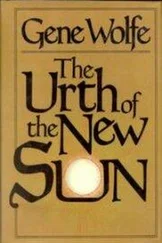Tom Wolfe - The Right Stuff
Здесь есть возможность читать онлайн «Tom Wolfe - The Right Stuff» весь текст электронной книги совершенно бесплатно (целиком полную версию без сокращений). В некоторых случаях можно слушать аудио, скачать через торрент в формате fb2 и присутствует краткое содержание. Жанр: Современная проза, на английском языке. Описание произведения, (предисловие) а так же отзывы посетителей доступны на портале библиотеки ЛибКат.
- Название:The Right Stuff
- Автор:
- Жанр:
- Год:неизвестен
- ISBN:нет данных
- Рейтинг книги:3 / 5. Голосов: 1
-
Избранное:Добавить в избранное
- Отзывы:
-
Ваша оценка:
- 60
- 1
- 2
- 3
- 4
- 5
The Right Stuff: краткое содержание, описание и аннотация
Предлагаем к чтению аннотацию, описание, краткое содержание или предисловие (зависит от того, что написал сам автор книги «The Right Stuff»). Если вы не нашли необходимую информацию о книге — напишите в комментариях, мы постараемся отыскать её.
The Right Stuff — читать онлайн бесплатно полную книгу (весь текст) целиком
Ниже представлен текст книги, разбитый по страницам. Система сохранения места последней прочитанной страницы, позволяет с удобством читать онлайн бесплатно книгу «The Right Stuff», без необходимости каждый раз заново искать на чём Вы остановились. Поставьте закладку, и сможете в любой момент перейти на страницу, на которой закончили чтение.
Интервал:
Закладка:
All three of them were taking part, but naturally Shepard, as prime pilot (no other word was used now), had precedence. And he took precedence. The little group in Hangar S now saw Al in both his varieties… and both were king, both the Icy Commander and Smilin' Al. Usually he left the Icy Commander back in Langley and brought only Smilin' Al to the Cape. But now he had both installed at the Cape. As the pressure built up, Al set a standard of coolness and competence that would be hard to top. In the medical examinations, in the heat-chamber sessions, in the altitude-chamber runs, he was as calm as ever. By now the White House had become extremely jittery—fearing what the debacle of a Dead Astronaut would do to American prestige—and so some dress rehearsals were conducted on the centrifuge at Johnsville, with Al and his two charade hands, Glenn and Grissom, taking part, and Al was imperturbable. Likewise, in the eleventh-hour simulations atop the rocket at the Cape. Al showed only one sign of stress: the cycles—Smilin' Al/Icy Commander—now came one on top of the other, in the same place, and alternated so suddenly that the people around him couldn't keep track. They learned a little more about the mysterious Al Shepard here in the eleventh hour. Smilin' Al was a man who wanted very much to be liked, even loved, by those around him. He wanted not just their respect but also their affection. Now, in April, on the eve of the great adventure, Smilin' Al was more jovial and convivial than ever. He did his Jose Jimenez routine. His great grin spread wider and his great beer-call eyes beamed brighter than ever before. Smilin' Al was crazy about a comedy routine that had been developed by a comedian named Bill Dana. It concerned the Cowardly Astronaut and was a great hit. Dana portrayed the Cowardly Astronaut as a stupid immigrant Mexican named Jose Jimenez, whose tongue wrapped around the English language like a taco. The idea was to interview Astronaut Jimenez like a news broadcaster.
You'd say things like: "What has been the most difficult part of astronaut training, Jose?"
"Obtaining de maw-ney, senor."
"The money? What for?"
"For de bus back to Mejico, you betcha, reel queeck, senor."
"I see. Well, now, Jose, what do you plan to do once you're in space?"
"Gonna cry a lot, I theeeenk."
Smilin' Al used to crack up over this routine. He liked to do the Jose Jimenez part; and if he could get someone to feed him the straight lines, he was in Seventh Heaven, Smilin' Al version. Feed him the lines for his Jose Jimenez knock-off, and he'd treat you like the best beer-call good buddy you ever had. Of course, the Cowardly Astronaut routine was also a perfectly acceptable way for bringing up, on the oblique, as it were, the subject of the righteous stuff that the first flight into space would require. But that was probably unconscious on Al's part. The main thing seemed to be the good fun, the camaraderie, the closeness and blustery affection of the squadron on the eve of battle. In these moments you saw Smilin' Al supreme. And in the next moment—
—some poor Air Force lieutenant, thinking this was the same Smilin' Al he had been joking and carrying on with last night, would sing out, "Hey, Al! Somebody wants you on the phone!"—and all at once there would be Al, seething with an icy white fury, hissing out: "If you have something to tell me, Lieutenant… you will call me 'Sir'!" And the poor devil wouldn't know what hit him. Where the hell did that freaking arctic avalanche come from? And then he would realize that… all at once the Icy Commander was back in town.
Of course those few who knew he was the man who was going up first were in a mood to forgive him all… well, save for an astronaut or two… As for the NASA technicians and the military personnel assigned to the mission, they were in a mood of utter adoration of the single-combat warriors , all three of them, for one of them would be placing his hide on top of the rocket. (And our rockets always blow up.) Toward the end the three of them would enter a room for some sort of test… and the technicians and workmen would stop what they were doing and break into applause and beam at them that warm moist smile of sympathy. Without knowing it, they were bestowing homage and applause in the classic manner: before the fact. These little scenes pressed Glenn's powers as charade master to the limit. More of these warm beams would be aimed at him than at either of the other two. He was the one mentioned in the press as the most likely choice. Not only that, he was the warmest of the three, the most consistently friendly toward one and all when he ran into them. It was just about too much. He had to keep smiling and aw-shucking and playing Mr. Modest, just as if it might, in fact, be he who was going up on top of the rocket on May 2 as the first man in the world to risk the mighty shot into space.
And then the omnipotent Integral intervened… a practical joker to the end! Early on the morning of April 12, the fabulous but anonymous Builder of the Integral, Chief Designer of the Sputniks, struck another of his cruel but dramatic blows. Just twenty days before the first scheduled Mercury flight he sent a five-ton Sputnik called Vostok 1 into orbit around the earth with a man aboard, the first cosmonaut, a twenty-seven-year-old test pilot named Yuri Gagarin. Vostok 1 completed one orbit, then brought Gagarin down safely, on land, near the Soviet village of Smelovka.
The omnipotent Integral! NASA had really believed—and the astronauts had really believed—that somehow, in the religious surge of the mission , Shepard's flight would be the first. But there was no putting one over on the Integral, was there! It was as if the Soviets' Chief Designer, that invisible genius, was toying with them. Back in October 1957, just four months before the United States was supposed to launch the world's first artificial earth satellite, the Chief Designer had launched Sputnik 1. In January 1959, just two months before NASA was scheduled to put the first artificial satellite into orbit around the sun, the Chief Designer launched Mechta 1 and did just that. But this one, Vostok 1 , in April 1961, had been his piece de resistance . Given the huge booster rockets at his disposal, he seemed to be able to play these little games with his adversaries at will. There was the eerie feeling that he would continue to let NASA struggle furiously to catch up—and then launch some startling new demonstration of just how far ahead he really was.
The Soviets persisted in offering no information as to the Chief Designer's identity. For that matter, they identified no one involved in Gagarin's flight other than Gagarin himself. Nor did they offer any pictures of the rocket or even such elementary data as its length and its rocket thrust. Far from casting any doubt as to the capabilities of the Soviet program, this policy seemed only to inflame the imagination. The Integral! Secrecy was by now accepted as "the Russian way." Whatever the CIA might have been able to do in other parts of the world, in the Soviet Union they drew a blank. Intelligence about the Soviet space program remained very sketchy. Only two things were known: the Soviets were capable of launching a vehicle of tremendous weight, five tons; and whatever goal NASA set for itself, the Soviet Union reached it first. Using those two pieces of information, everyone in the government, from President Kennedy to Bob Gilruth, seemed to experience an involuntary leap of the imagination similar to that of the ancients… who used to look into the sky and see a clump of stars, sparks in the night, and deduce there from the contours of… an enormous bear!… the constellation Ursa Major!… On the evening of Gagarin's flight, April 12, 1961, President Kennedy summoned James E. Webb and Hugh Dryden, Webb's deputy administrator and NASA's highest-ranking engineer, to the White House; they met in the Cabinet room and they all stared into the polished walnut surface of the great conference table and saw… the mighty Integral!… and the Builder!—the Chief Designer!… who was laughing at them… and it was awesome!
Читать дальшеИнтервал:
Закладка:
Похожие книги на «The Right Stuff»
Представляем Вашему вниманию похожие книги на «The Right Stuff» списком для выбора. Мы отобрали схожую по названию и смыслу литературу в надежде предоставить читателям больше вариантов отыскать новые, интересные, ещё непрочитанные произведения.
Обсуждение, отзывы о книге «The Right Stuff» и просто собственные мнения читателей. Оставьте ваши комментарии, напишите, что Вы думаете о произведении, его смысле или главных героях. Укажите что конкретно понравилось, а что нет, и почему Вы так считаете.











